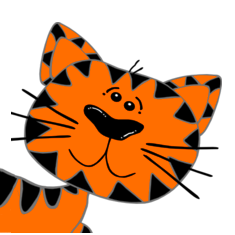General thoughts about this project
-
 by
luca-chimp
by
luca-chimp
Lying in the sun bit dizzy, I'm thinking about the chimp&see project and some questions are circling in my mind. When I look the clips and sequences, I often muse about the chimps we see and watch an recognize and name ... Some of them maybe not even live anymore, some juveniles are adults now, because the clips are mostly 4 years old. And not only we watch and recognize. all these scientiest roaming through the woods, collecting pooh and whatever else, I think they named them too in the last four years. There must be family-tracks and maybe researches (or articles?) about this special groups (maybe restlessstar ...). Surely they made genetic researches with the pooh … maybe THEY know for long, whom La_Presidente inherited her ears ...
Is there any adjustments between the two researchings? How does this work here fit or fill in into the knowledge of the groups (four years ago ...)
Posted
-
 by
ksigler
moderator
in response to luca-chimp's comment.
by
ksigler
moderator
in response to luca-chimp's comment.
Wow... I wonder about the same things! I don't know if these sites are studied long term in that way. If the data is there, it would be cool to know which chimps are related to see if our guesses based on traits and behavior are accurate. I often wonder how they're all doing now, and what they look like. It's like watching a reality TV show that gets cancelled half-way through. You know (or hope) the characters you love are still out there, somewhere, but you'll never know the rest of their story.... for better or worse. 😦
Posted
-
 by
MimiA
scientist, moderator
by
MimiA
scientist, moderator
Hi guys! Thanks for the great questions 😃
These videos are all from various PanAf sites (http://panafrican.eva.mpg.de/). The PanAf started in 2010 and we currently have the last 10 sites running right now and we hope to be done with all the field work by the summer of next year. So some videos are 6 years old and some are being recorded right now!
In the mean time, we have started analyzing the data that we have in house but it has only really just begun this year so I have no results to share yet. Well, only our first paper that came out this year 😃 http://www.nature.com/articles/srep22219
We don't have any good way of linking the individuals we see on camera to the samples we collect unfortunately but we will know more about the genetics of these groups by the end of next year. The idea is the cameras and genetics should confirm the same thing: group number & grouping patterns (even if we can link the them 1 for 1) while the cameras give us extra info on behaviour while the genetics gives us extra info on relatedness.
As far as knowing these chimps and what has happened to them, almost all the groups have not been studied before, some research/protection continues on these groups but usually not with continued camera trapping. We hope that by determining the groups via chimpandsee these results will convince organizations into long-term conservation/research monitoring of at least some of these groups. Some groups will be continued to be monitored in the future (eg: Cool Silence, Red Water, Muddy frost and others to come) and in some other areas the groups will not be monitored but the regions they live in will be protected and monitored (eg: Quiet Wood, Dawn Bird, Restless star, Cold Fire, Lingering Shape, Crimson Dew and others to come).
When yous say "I think they named them too in the last four years" - actually in most cases that isn't true. Our researchers definitely look at the videos in the field but in almost all cases there is no time to do what you guys do with determining the individuals, so in many cases, you are the first to name the chimps!
As the PanAf produces results I promise we will update Talk and the blog with our findings 😃
Please feel free to ask if you have any more questions!
(thanks to @AnLand for messaging me about this thread we over looked!)
Posted
-
 by
Boleyn
moderator
by
Boleyn
moderator
Thanks for the explanations @MimiA. It's a relief to know that some of the groups and regions will be monitored and protected and we cannot appreciate enough the work you researchers do out in the field and in the office!
Posted